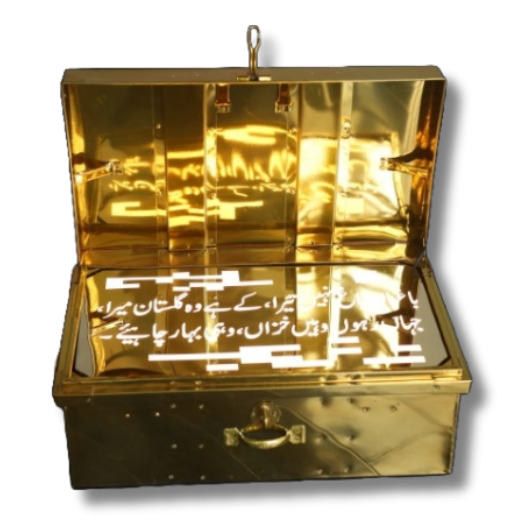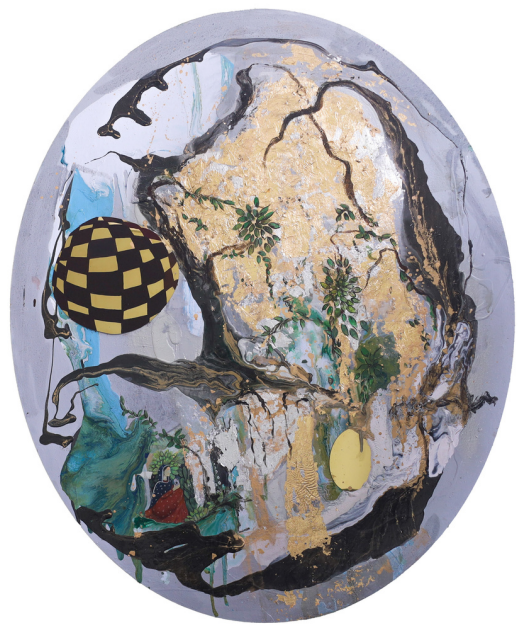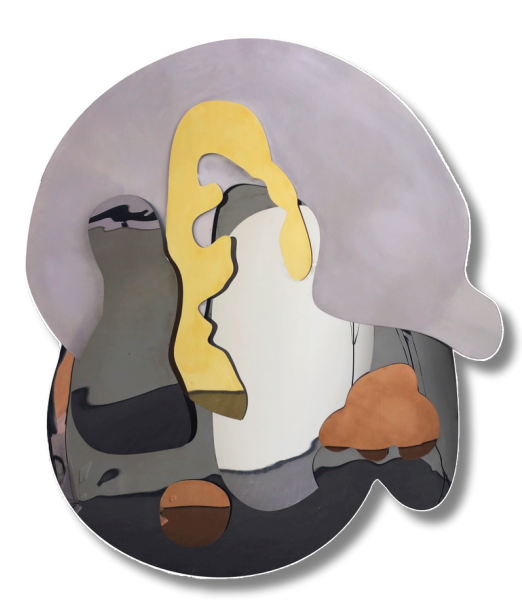Amidst the disharmony of urban life, where concrete jungles suffocate the spirit and solitude becomes a distant dream, gardens emerge as sanctuar
Amidst the disharmony of urban life, where concrete jungles suffocate the spirit and solitude becomes a distant dream, gardens emerge as sanctuaries for the soul, summoning us with their lush embrace. In the words of the poet Rumi, ‘Let yourself be silently drawn by the strange pull of what you really love. It will not lead you astray.’ Qinza Najm’s exhibition, ‘(In)accessible Gardens,’ displayed at ArtSoch gallery in Lahore in early March, tenderly echoed this sentiment, inviting viewers to navigate the delicate landscapes of their inner temples while imagining the tangible manifestations of these cherished retreats.
Najm’s artistic journey, as articulated in her own words, embarks from the lush gardens of Lahore to the complex streets of New York; an ode to her own life spent between the two cities, transcending geographical confines to explore the fragile lands of solace and belonging.
Her canvas? Stainless steel, an industrial giant transformed under skilled hands into delicate and flowing forms, bearing the weight of language. In her works, Urdu and English words weave through the metal like vines intertwining in a forgotten garden, trying to find order in chaos.
Walking through the exhibition, one could easily find themselves immediately struck by the juxtaposition of the organic and the industrial, as steel-cut shapes breathed life into the space, their surfaces adorned with scenes reminiscent of rustic paradises, painted in oils and acrylics. Yet, beneath the layers of tranquility lies the exploration of accessibility—both physical and emotional. Najm’s work challenges us to confront the barriers that confine us, urging us to reimagine the spaces we inhabit and the sanctuaries we seek.
While conversing with the artist herself, Najm spoke of whispered secrets and childhood musings that linger amidst the scent of fresh grass. Indeed, ‘(In)accessible Gardens’ transcends mere play of materials, summoning us to wander through the corridors of memory and desire, where glossy reflections mingle with matte finishes, inviting us to contemplate the elusive beauty of our past, present, and future.What sets this body of work apart is the artist’s ingenious incorporation of reflective properties within the steel itself, creating a mesmerizing interplay between viewer and artwork. As one gazes upon these steel gardens, they are not only met with the artist’s vision but also confronted with their own reflection, blurring the boundaries between observer and observed. This intentional integration of reflexivity invites viewers to engage in a deeply personal dialogue with the artwork, prompting introspection and self-reflection amidst the lush beauty of the depicted landscapes. In this symbiotic relationship between steel and viewer, the artist achieves a transcendent harmony, where the materiality of steel becomes an outlet for thoughtful introspection and connection with the natural world.
However, while Najm’s thematic exploration is undeniably compelling, there are moments where the execution feels somewhat constrained. The malleable and flowing nature of the Nastaliq script itself, comes out to as rather inert and rigid within Najm’s artworks. The laser-cut words, though visually striking, occasionally border on the dogmatic, their presence overshadowing the subtlety of Najm’s visual storytelling and her organic-shaped surfaces. Moreover, while the concept of accessibility is admirably tackled, there are instances where the message feels somewhat diluted amidst the elaborate flourishes of steel.
Despite this, what astounded me was how immaculately Najm incorporates scenes of garden along with the black and white patterns of chess onto her surface. As if creating a dialogue between the opposing powers in life. This visual symbol almost serves as a metaphor for the complexities of human existence. Through the strategic placement of chess motifs amidst lush garden scenes, the artist skillfully navigates the realms of symbolism, weaving a narrative that transcends mere aesthetics. This juxtaposition serves as a powerful representation of the intricacies of human experience, where moments of peace and harmony coexist with moments of tension and conflict. By intertwining these seemingly disparate elements, the artist invites viewers to contemplate the delicate balance between control and spontaneity, and the eternal quest for meaning amidst the ever-shifting landscape of existence.
In South-Asian traditions, when one thinks of the word “sandooq” or “peti” what instantly comes to mind is a silver colored coffer made of steel, used to put away lesser used belongings in every house. Najm strikes and baffles her audience with the use of a gold coffer, installed between a small fenced garden in the middle of the gallery. One is instantly drawn to this installation as it challenges the traditional aspects of the coffer as well as the color gold. The coffer lays open, and upon coming close, one is encountered with a verse, cut in Urdu script, that translates to “the garden isn’t yours oh gardener, in fact it is my orchard. Let there be sprig, let there be autumn, where ever I be”This poetic verse explains how the garden isn’t a mere tangible entity but an intangible notion that exists on an interpersonal level for every human being. While gold, the color of inaccessibility and unreachability for many, is used here to foster conversation on the coexistence of dreams and reality.
(In)accessible Gardens served as an emotional witness to the transformative power of art, urging us to seek comfort within the turmoil of existence and to reclaim the spaces of serenity that lie dormant within us. As we wander through Qinza Najm’s lush tapestry, we are reminded that, in the words of Marcel Proust, ‘The real voyage of discovery consists not in seeking new landscapes, but in having new eyes.’The solo show by Qinza Najm tittled “(In)accessible Gardens”, curated by Mariam Hanif and co-curated by Somia Naveed was displayed at Art Soch gallery in Lahore from March 6th -16th 2024.








COMMENTS